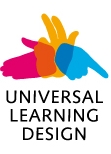Paper details
Transition to Higher Education and to Employment: International Trends and Challenges
Prof. Serge Ébersold
National Higher Institute for Teacher Training and Research for the Education of Young Disabled Persons and Adapted Teaching
Abstract
|
Access to tertiary education increases the employment opportunities persons with disabilities’ have as well as their ability to maintain their employability and is therefore a key factor for their social inclusion. Inclusive education policies developed in the last decade by most OECD countries improved substantially the access of persons with disabilities to tertiary education. They supported a developmental approach of disability, led education institutions to open up to diversity and to focus on quality and effectiveness for all students. As a result they increased the number of SEN students accessing to upper secondary education and meeting prerequisites made to access to tertiary education and enhanced their chances to complete their courses. For example, In the United Kingdom, the proportion of SEN students with a known disability grew from 2% of the student population in 1994-95 to 6.5% of the student population in 2006-2007. In France, 695 students with disabilities were registered in 1981, a number which grew to 8,763, or 0.4% of the population in the year 2006-2007. However, young adults with disabilities are still facing difficulties in accessing tertiary education since their access to tertiary education may not be as fluent as for non disabled peers or not reflect personal choices. These difficulties may be related to early tracking systems leading preferentially SEN students to less demanding and effective courses after lower secondary education as well as to barriers rooted in changes in definition of disability and in requirements made to institutions as well as to individuals. Existing data show also that SEN students are more likely to face difficulties in achievement and have more erratic pathways within tertiary education: for example in Germany, they change over proportionally study programs or institutions compared to their peers and are more likely to drop out. These difficulties are rooted in higher education institutions’ ability to be receptive to diversity and tend to maintain and even widen the qualification gap between them and non disabled persons and perpetuate their difficulties sin entering employment, especially for those with mental, emotional or behavioral disorders. The presentation builds upon an OECD study on transition to tertiary education and to employment of young adults with disabilities among 6 OECD countries that is coordinated by the author since 2006.
|
For the full paper and presentation material as well as the record of the presentation please sign in.









